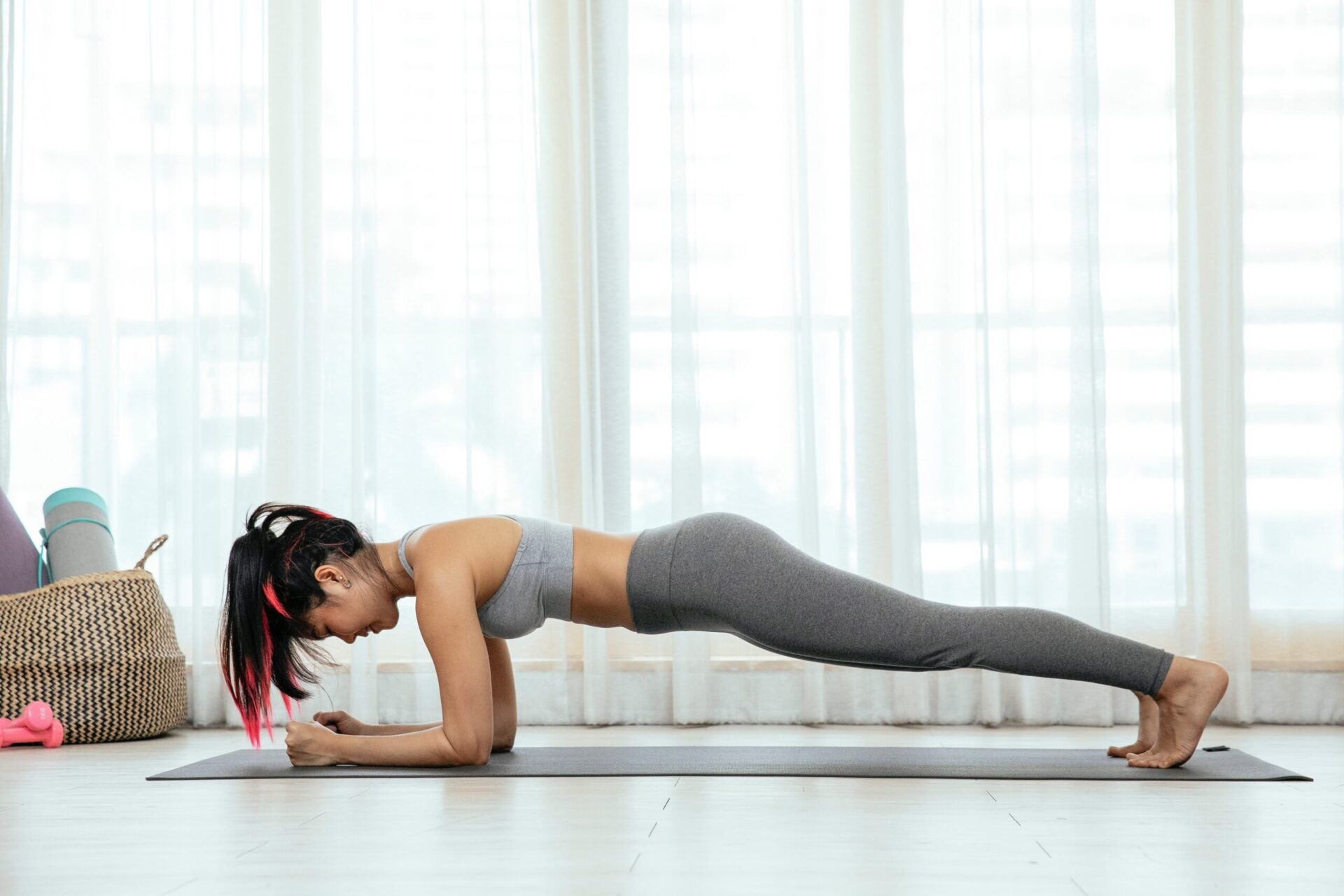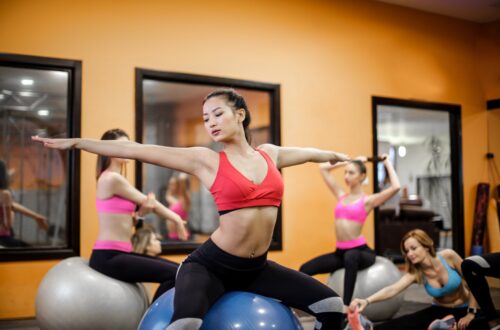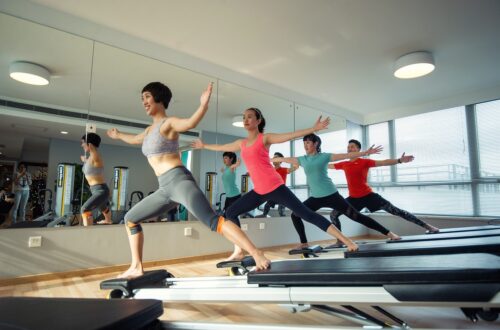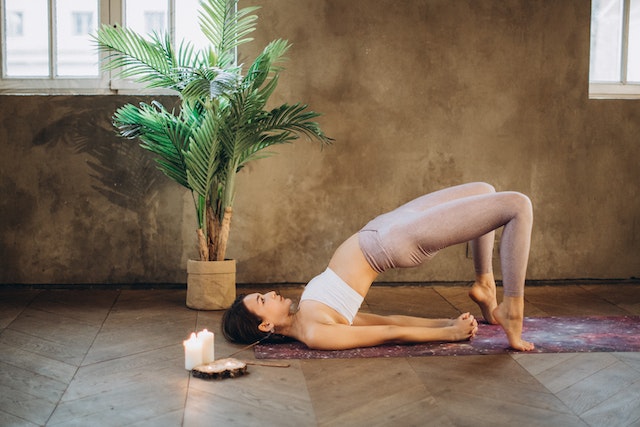
Best Back Exercises For Women to Improve Posture
Maintaining good posture is crucial for overall health and well-being, especially for women, who often juggle multiple responsibilities. It not only enhances physical appearance but also plays a significant role in preventing various musculoskeletal issues.
In this blog, we will delve into the significance of good posture, explore the common causes of poor posture in women, highlight the numerous benefits of back exercises specifically tailored for women,
Furthermore, we will provide guidance on how to perform these exercises correctly as well as valuable tips on how to seamlessly integrate them into daily life.
By the end of this article, you will be armed with valuable knowledge to prioritize your posture and embrace a healthier, more confident self.
The Importance of Good Posture
Good posture is more than just standing up straight. It refers to the proper alignment of the body, where the bones, muscles, and joints work harmoniously to support the spine’s natural curves.
When a woman maintains good posture, her body is balanced, allowing optimal functioning of vital organs, improved circulation, and reduced strain on the muscles and ligaments.
In addition, good posture promotes efficient breathing, enhances digestion, and contributes to a positive self-image. It is an integral aspect of overall physical and mental well-being.
Common Causes of Poor Posture in Women
Various factors contribute to poor posture in women. Sedentary lifestyles, characterized by long periods of sitting, promote muscular imbalances and weaken the core and back muscles necessary for maintaining good posture.
Additionally, frequently hunching over electronic devices, such as smartphones and laptops, strains the neck and shoulders, leading to rounded shoulders and forward head posture.
High-heeled shoes, which alter the alignment of the spine, can also contribute to postural deviations. Finally, hormonal changes during pregnancy and menopause may affect muscle tone and stability, potentially impacting posture.
Recognizing these causes is crucial to addressing and rectifying poor posture effectively.
Benefits of Back Exercises for Women
Engaging in targeted back exercises offers numerous benefits for women aiming to improve posture. These exercises strengthen the muscles responsible for supporting the spine, including the erector spine, rhomboids, and deep core muscles.
Increased muscle strength and endurance in these areas contribute to better posture by helping to maintain the natural curvature of the spine. Back exercises also improve spinal flexibility and mobility, reducing the risk of stiffness and discomfort.
Furthermore, strengthening the back muscles enhances overall physical performance, making daily activities easier and reducing the likelihood of injuries.
Proper Warm-up and Safety Precautions
Before diving into any exercise routine, it is essential to prioritize warm-up exercises and follow safety precautions. A thorough warm-up prepares the body for physical activity by increasing blood flow to the muscles and joints and reducing the risk of injury.
Dynamic stretches, such as arm circles and trunk rotations, help loosen up the back muscles. Additionally, it is crucial to maintain proper form during exercises, avoid overexertion, and listen to your body’s signals.
If you have any pre-existing medical conditions or concerns, consult with a healthcare professional before beginning a new exercise regimen.
Best Back Exercises for Women
To strengthen the back muscles and improve posture, women can incorporate a variety of exercises into their fitness routines. Let’s explore five highly effective back exercises:
a. Exercise 1: Superman
The Superman exercise targets the muscles in the lower back and helps improve spinal extension. Lie facedown on a mat, arms extended overhead, and legs straight.
Lift your chest, arms, and legs off the ground simultaneously, engaging the back muscles. Hold for a few seconds before lowering back down. Repeat for a designated number of repetitions.
b. Exercise 2: Bridge
The Bridge exercise primarily works the glutes and hamstrings but also engages the back muscles. Lie on your back, knees bent, feet flat on the ground, and hip-width apart.
Lift your hips off the ground, creating a straight line from your knees to your shoulders. Squeeze your glutes and hold the position for a few seconds before lowering back down. Repeat for the desired number of repetitions.
c. Exercise 3: Lat Pull-Downs
Lat Pull-Downs Lat Pull-Downs target the latissimus dorsi muscles, commonly known as the lats, which are responsible for shoulder and back stability.
Using a lat pull-down machine or resistance bands, sit with your hands slightly wider than shoulder-width apart, palms facing forward. Pull the bar down toward your chest, engaging your back muscles. Slowly return to the starting position and repeat.
d. Exercise 4: Rows
Rows strengthen the muscles in the upper back and improve posture by retracting the shoulder blades. Stand with your knees slightly bent, holding dumbbells in each hand.
Hinge forward at the hips, keeping your back straight. Bend your elbows and pull the dumbbells toward your chest, squeezing your shoulder blades together. Slowly lower the dumbbells and repeat the motion.
e. Exercise 5: Bird Dog
The Dog exercise targets the core, lower back, and glutes. Start on all fours, with your hands directly beneath your shoulders and your knees beneath your hips.
Simultaneously extend your right arm forward and your left leg backward, maintaining a straight line from head to toe. Hold for a few seconds, then return to the starting position. Repeat on the opposite side, and continue alternating sides.
f. Exercise 6: Plank
The plank exercise is a versatile and effective way to strengthen the entire core, including the back muscles. Begin by assuming a push-up position, supporting your body with your forearms and toes.
Engage your core and maintain a straight line from your head to your heels. Hold this position for as long as possible, gradually increasing the duration as your strength improves.
Regular plank exercises can improve spinal alignment and develop the muscles that support good posture.
Tips for Performing Back Exercises Correctly
When performing back exercises, it is crucial to maintain proper form to maximize their effectiveness and minimize the risk of injury. Here are a few tips to keep in mind:
Engage your core muscles throughout the exercises to provide stability and protect your lower back.
Breathe deeply and exhale during the exertion phase of each exercise.
Avoid straining or using momentum to complete the movements; focus on controlled and deliberate motions.
Start with lighter weights or resistance and gradually increase as your strength improves.
Maintain a neutral spine position, avoiding excessive arching or rounding.
If you experience pain or discomfort during any exercise, stop and consult a healthcare professional.
Incorporating Back Exercises into Your Fitness Routine
To reap the benefits of back exercises, it is essential to incorporate them strategically into your fitness routine. Aim to perform these exercises at least two to three times per week, allowing adequate rest days for muscle recovery.
Consider integrating them into a full-body workout or as part of a dedicated back workout. Gradually increase the intensity, repetitions, or resistance as your strength and endurance progress.
Combining back exercises with cardiovascular activities, such as swimming or brisk walking, can further enhance posture and overall fitness.
Additional Lifestyle Factors to Improve Posture
In addition to targeted exercises, certain lifestyle factors contribute to better posture and long-term postural improvement. These factors include:
Ergonomics: Maintain proper workstation ergonomics, including an ergonomic chair, desk, and computer setup, to support good posture during prolonged sitting.
Stretching and Flexibility: Regularly stretch the chest, hip flexors, and hamstrings to counteract the effects of sitting and promote postural alignment.
Mindful Sitting and Standing: Be mindful of your posture while sitting and standing, ensuring that your shoulders are relaxed, and your spine is elongated.
Regular Movement Breaks: Take breaks every 30 minutes to stand up, stretch, and move around to prevent prolonged periods of sitting.
Core Strengthening: Focus on strengthening the core muscles, including the abdominals and back, to provide a stable foundation for good posture.
Body Awareness: Practice body awareness exercises, such as yoga or Pilates, to develop a better understanding of your body’s alignment and movement patterns.
Conclusion
To wrap it up, taking action to improve your posture is crucial for a healthier and more confident you. Identify the causes of poor posture, such as sedentary habits or hormonal changes, and address them head-on.
Incorporate targeted back exercises into your fitness routine, focusing on strengthening the key muscles that support your spine. Prioritize proper warm-up and safety precautions to prevent injuries.
Combine this with ergonomic adjustments, regular stretching, and mindful movement throughout your day. Commit to consistency and embrace the journey towards better posture.
With determination, discipline, and a commitment to action, you can achieve the posture you desire and lead a more vibrant, empowered life.


You May Also Like

The Truth About Chest Workouts for Women: Separating Fact from Fiction
22 September 2023
7 Ways Pilates Can Keep You Injury-Free During Exercise
19 December 2023
